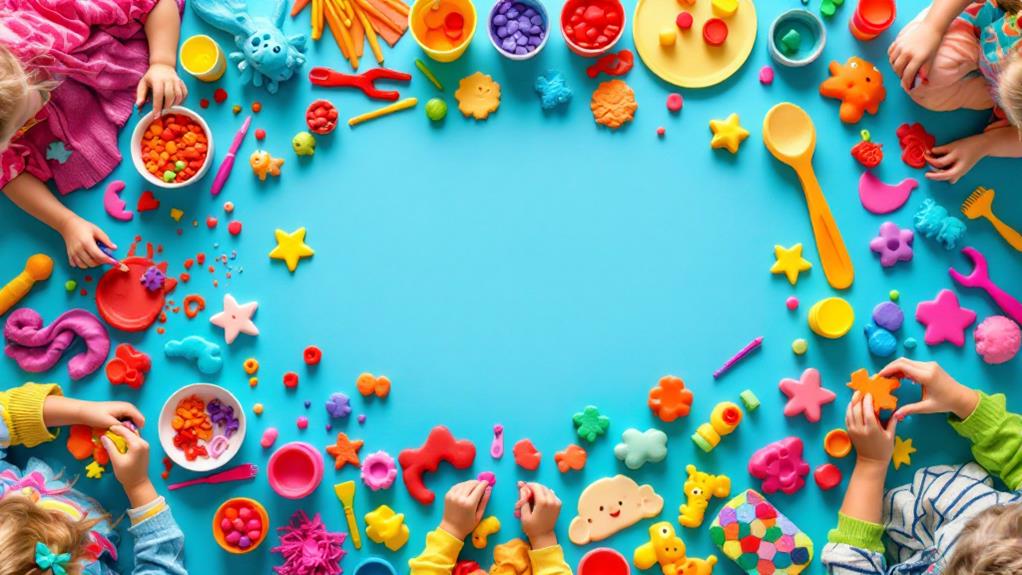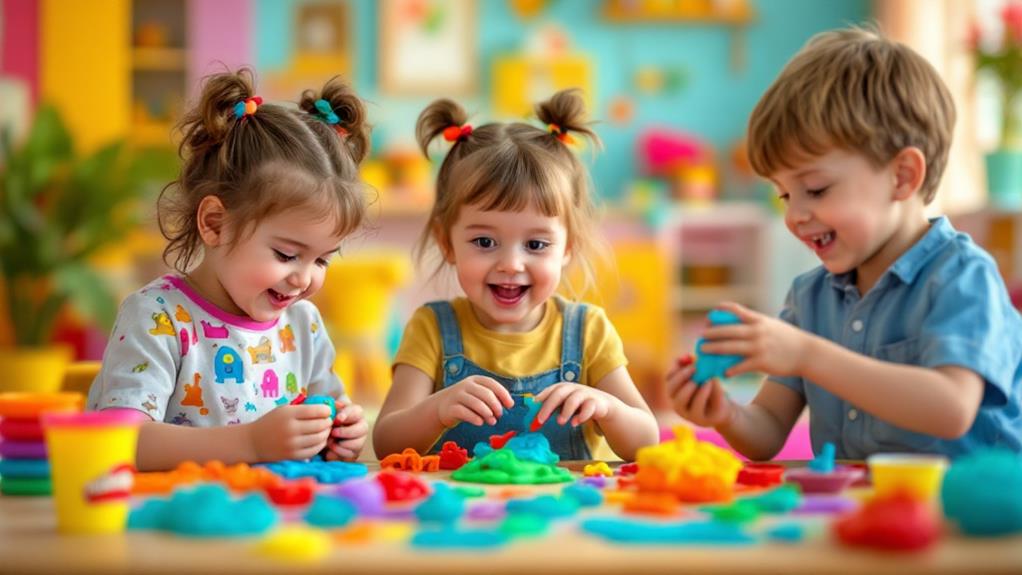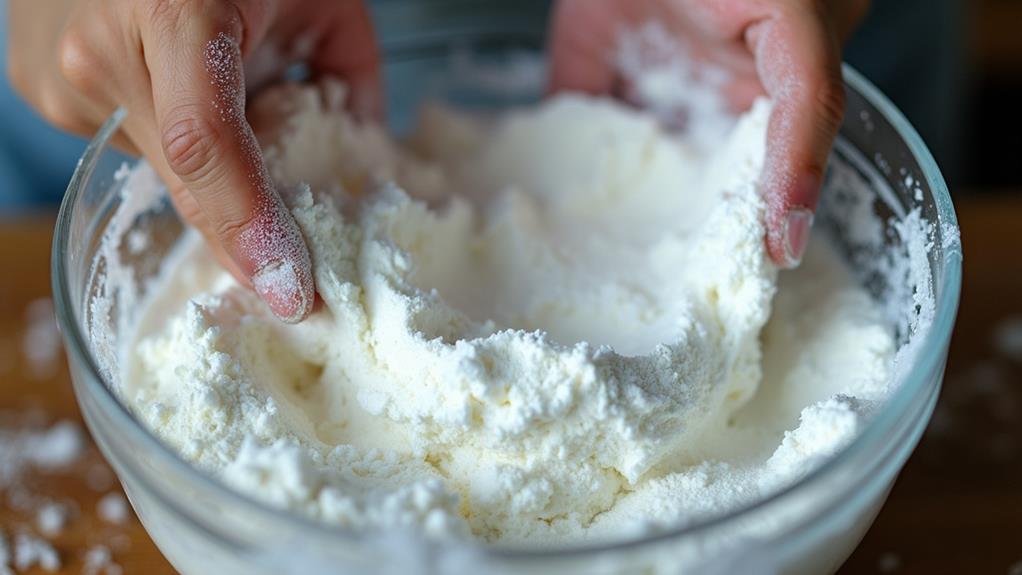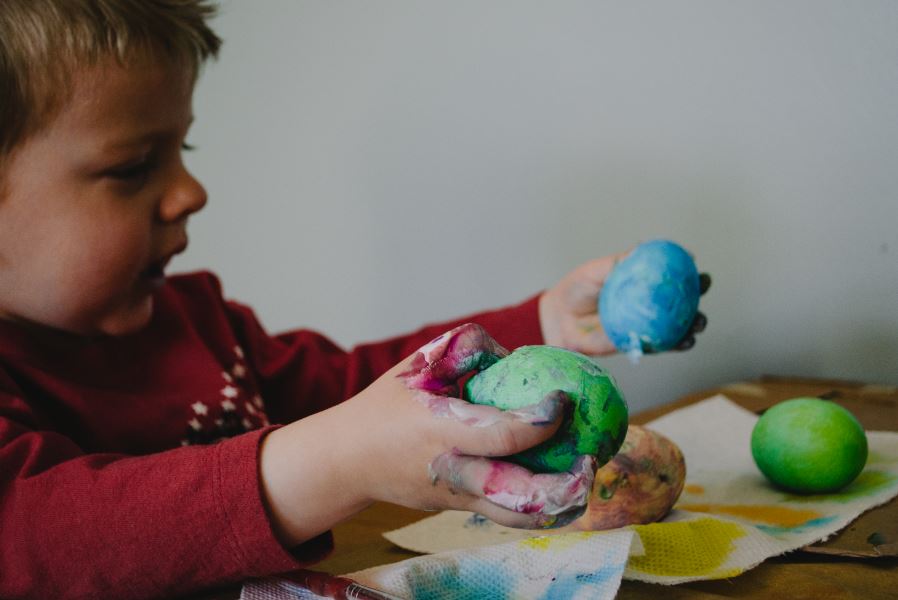What Ages Is Play-Doh Appropriate For?

Play-Doh is great for kids from 2 years and up, helping them improve fine motor skills and spark creativity. You can even introduce it to toddlers from around 15 months, but make certain you supervise closely. For younger kids, focus on squishing and rolling. As they grow, they can investigate shaping and cutting with cookie cutters to encourage imaginative play. Older children, even up to 12 years and beyond, can enjoy more complex projects. Just remember to keep an eye on them to guarantee safety. Want to know more about how Play-Doh can benefit your child?
Age Recommendations for Play-Doh
When considering maturity recommendations for Play-Doh, it's crucial to keep safety in mind. Generally, Play-Doh is deemed appropriate for children from 2 years old and up, primarily due to choking risks associated with younger toddlers. However, kids as young as 15 months can safely investigate Play-Doh with close adult supervision. This allows them to engage in sensory play while developing fine motor skills and enhancing their cognitive development through hands-on learning. If you're introducing Play-Doh to a toddler, opting for edible playdough options is a smart choice. These alternatives reduce safety concerns and cater to children prone to mouth exploration. As children mature, they often retain their interest in Play-Doh, sometimes continuing to enjoy it until they are 7-12 years old or even beyond. You'll find that creative kids tend to hold onto their fascination longer than their peers, especially if you introduce themed sets that spark their imagination.
Ultimately, always prioritize safety by supervising younger children. This way, they can enjoy the fun of Play-Doh while minimizing any choking hazards. Remember, the right time to start can vary, but ensuring a safe environment is key to a positive experience.
Developmental Milestones and Play-Doh
Engaging with Play-Doh can significantly assist children's developmental milestones, making it an invaluable tool for early learning. Starting around the period of 2, playing with Play-Doh improves fine motor skills, which are vital for writing preparation. During the developmental stages from 2 to 5 years, you'll notice your child's dexterity improve as they squish, roll, and shape the playdough. This manipulation not only strengthens their grip but also promotes increased concentration and attention spans during play.
Cognitive development also flourishes through this hands-on activity. As children manipulate the dough, they learn to identify colors, shapes, and textures, enriching their understanding of the world around them. By ages 3 and up, sharing Play-Doh in cooperative play scenarios encourages social skills like turn-taking and sharing, necessary for building friendships.
Even as children grow, from ages 6 to 12, their creativity continues to thrive with Play-Doh. They often investigate more complex projects, showcasing the versatility and lasting appeal of this simple material. In general, incorporating Play-Doh into playtime not only supports motor skills and cognitive development but also fosters vital social interactions, making it a perfect choice for diverse developmental stages.
Safety Guidelines and Supervision
While Play-Doh offers numerous developmental benefits, it's important to prioritize safety during playtime. When your child engages with Play-Doh, keep in mind that it's generally recommended for kids from 2 years and older. Younger toddlers may face choking hazards or be prone to mouth contact, leading to potential ingestion.
Constant supervision is necessary to guarantee your child follows safety guidelines. Establish clear boundaries about mouth contact with Play-Doh. If those rules aren't followed, be prepared to cease play immediately. For little ones who tend to investigate with their mouths, consider using edible playdough as a safer alternative.
To further improve safety, try keeping Play-Doh activities in non-carpeted areas. This not only simplifies cleanup but also reduces the risk of ingesting small pieces that may fall to the ground. Remember, your vigilance plays a significant role in guaranteeing a safe and enjoyable play experience. By following these safety guidelines and supervising your child, you can help them fully enjoy the creative benefits of Play-Doh without unnecessary risks.
Engaging Activities by Age
Play-Doh offers a spectrum of engaging activities tailored to different phases of life, making it a versatile tool for creative development. For toddlers ranging from 15-24 months, you can use Play-Doh by encouraging simple squishing and rolling. These activities improve sensory exploration and basic motor skills. As your child grows into preschool years (3-5 years), they'll enjoy shaping and cutting with cookie cutters. This fosters creativity and helps develop vocabulary words related to shapes and colors while promoting collaborative play.
When your child reaches 6-11 years old, themed sets become a great way to engage them in role-playing scenarios. These activities not only nurture imaginative play but also further develop fine motor skills. Even older children, including tweens, can find enjoyment in Play-Doh through artistic projects and group activities. You might try a fun playdough recipe together, allowing them to investigate textures and colors while socializing with friends. Regardless of stage, Play-Doh remains a fantastic tool for creativity, encouraging children to actively engage and express themselves through different hands-on activities.
Benefits Across Different Age Groups

Children of all stages can reap significant benefits from using Play-Doh, starting from as young as 2 years old. When toddlers engage in playing with Play-Doh, they improve their fine motor skills and promote sensory exploration. This manipulation helps develop their coordination and dexterity, laying a solid foundation for future skills.
As children enter preschool years, around 4-5 years, they explore deeper into imaginative play. Shaping and molding the dough encourages creative expression and even language development, as they often narrate stories while crafting their creations. This age group truly blossoms through their playful storytelling.
For kids between 6-11, Play-Doh serves as a tool for exploring artistic potential. They tackle more complex projects that challenge their creativity and foster social interaction through collaborative play. It's not just a toy; it's a medium for them to connect with friends while expressing themselves.
Even older children and adults can find joy in Play-Doh. Its versatility allows for artistic expression and stress relief, making it a timeless option across different age ranges. No matter the stage, playing with Play-Doh brings unique developmental benefits that everyone can enjoy.
Tips for Introducing Play-Doh
Introducing Play-Doh to young ones can be an exciting adventure that sparks creativity and aids in developing fine motor skills. If you're curious about how to start, here are some tips to guarantee a fun and safe experience:
- Start Early: Begin introducing Play-Doh around 15 months old. This helps improve fine motor skills through guided interaction.
- Use Edible Options: For children prone to tasting materials, consider using great homemade or homemade edible Play-Doh. This guarantees safety while they investigate textures.
- Supervise Closely: Always supervise young children when they're playing with Play-Doh. It's crucial to prevent ingestion and to guide them in following safety rules about mouth contact.
- Gradual Introduction: Ease them into playing with Play-Doh by engaging in simple activities. Start with squeezing and rolling the dough to help them familiarize themselves with the material.




